Red Wine Vinification
Credits: Bourgogne-wines.com
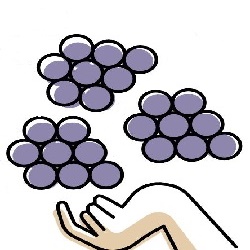
| HarvestingBlack grapes are harvested and sorted. |
CrushingAfter harvesting, the grapes are crushed to release the must. | |
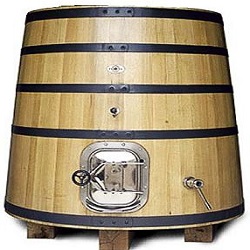
| FermentationYeasts transform the red grape juice into wine (sugar into alcohol). |
PressingPressing separates the juice from the skin, seeds, and stems. | |
MaturationMaturation refers to the time after fermentation. | |
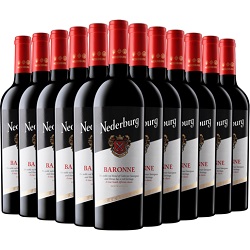
| AgingAging refers to the changes in wine after bottling. |
Harvesting
The first step to produce a red wine, is to harvest black grapes.
The most common black grapes are:
- Cabernet Sauvignon
- Pinot Noir
- Syrah/Shiraz
- Sangiovese
- Tempranillo

Quality red wines are produced from hand-picked grapes
Sorting
After harvesting, grape clusters are sorted for quality.
Unripe, diseased, and damaged grapes, bugs and leaves are removed.

Grapes are sorted before crushing
Crushing
After sorting, the grapes are crushed to crack the skins and release the must.
Must is the crushed grape juice that contains flesh, skins, seeds, and stems.
Modern crushing machines are calibrated not to crush the seeds full of bitter tannins.
For red wines, crushing means to break the skins, allowing the pulp (juice and flesh) to be exposed, and natural yeast to start fermenting.
Destemming
The crushing machine can also remove the stems to minimize the astringent taste they can add to wine.
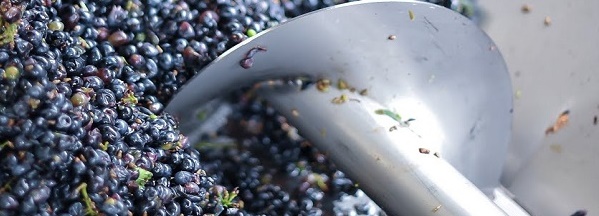
Grapes are crushed to release the must
"Vinum mustum"="Young wine"
Grape Stomping
Grape-stomping (french: pigeage) is the historical crushing method used in wine-making. Instead of being crushed mechanically, the grapes are treaded by barefoots.
Today, with modern crushing machines, this is more an activity of wine festivals.
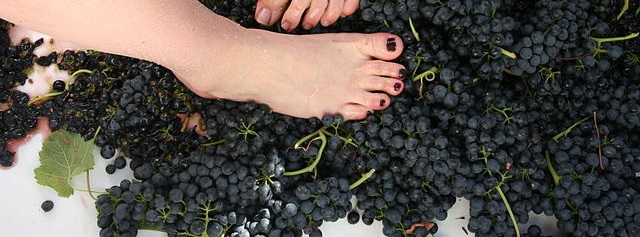
Pieage - Grape Treading - Grape Stomping
Cold Maceration
Maceration is a method where tannins, colors, and flavors are extracted from the skins. Temperature controlled (12/13°C) pre-fermentation maceration takes place in steel tanks for 2-4 days.
This cold soaking, delays fermentation and allows for a longer contact between the juice and the skins. The result is more intense wines.
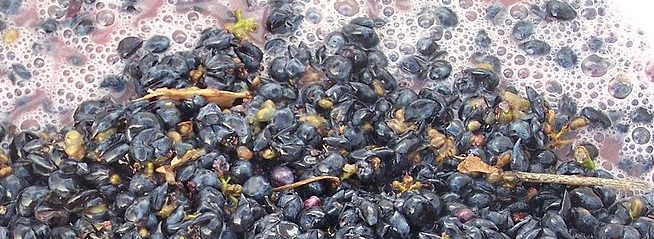
Cabernet Sauvignon must interacting with the skin during maceration.
Alcoholic Fermentation
Alcoholic fermentation transforms grape juice into wine.
Yeasts transform the sugar in the juice into alcohol (and CO2).
=
Fermentation in stainless steel does not add ekstra aromatic compounds. Fermentation in oak barrels adds secondary flavors.
Red wines are fermented at high temperatures (20-32°C, 68-90°F) to extract color and tannins.
Rosé and white wines are fermented at lower temperatures (12-22°C, 54-72°F) to maximize the fresh fruit aromas.
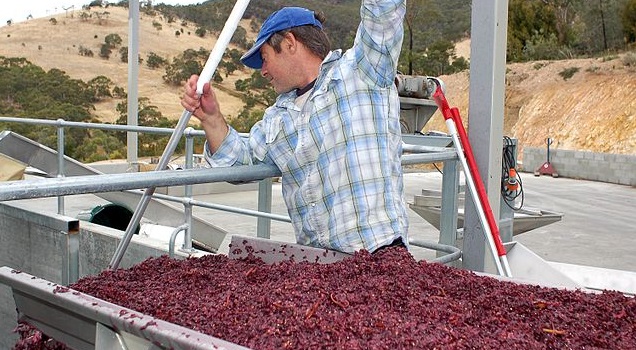
Feeding crushed Pinot Noir grapes into the fermenter.
The Cap
During fermentation, a cap floats to the top (skins, stems and seeds). If the cap is left on the top, the extraction of colors, tannins, and aromas will be reduced.
As a daily procedure, the cap is mixed back into the juice through 2 techniques: Pumping Over and Punching Down.
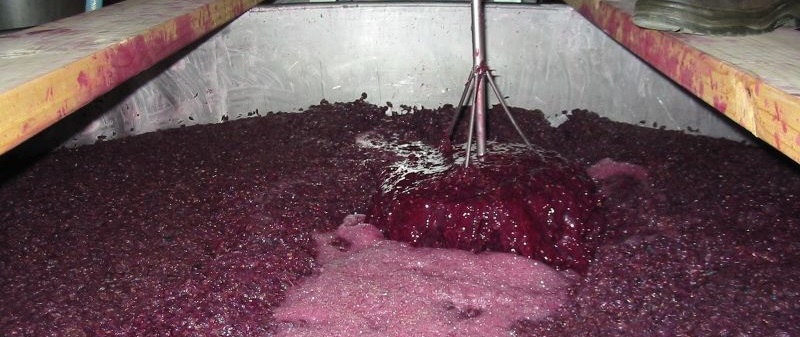
The cap of grape skins that forms on fermenting red wine.
Pumping Over
Pumping over (French:Remontage) means pumping wine from the bottom of the tank and pour it over the top of the fermenting must to submerge the skins and to release carbon dioxide.
Punch Down
Punch down (French:Pigéage) means breaking up the cap on the surface of the fermenting wine, and push it back and let the juice extract more color, tannins, and flavors from it.
Pressing

Pressing separates the liquid from the solid. White wines are pressed immediately to avoid contact with skins, stems and seeds rich in tannins, while red wines are pressed much later in the vinification process. This is the major difference between white and red wines.
Malolactic Fermentation (MLF / MLC)
Malolactic Fermentation (Malolactic Conversion) is a process where malolactic bacterias consume malic acid (present in the grape) and convert it to lactic acid.
The wine becomes rounder, fuller, and less acidic. Practically easier to drink and better with food.
Maturation
Maturation refers to the period after fermentation and before bottling. Blending, clarification and stabilization is also a part of this phase.
The wine is separeted from its lees (dead yeast cells), sulfites are added to protect against oxydation, and then it's time to sleep!
Some wines are made for early drinking, but most red wines can benefit from maturation and aging.
Maturation in Steel Tanks
Steel or fiberglass tanks are inert (do not interact with the liquid), and does not change the aromas of the wine.
Maturation in Oak
In oak barrels, the wine is exposed to air trough the wood, and the flavors change. Grape aromas fade and oak flavors of vanilla, cedar, smoke appear.
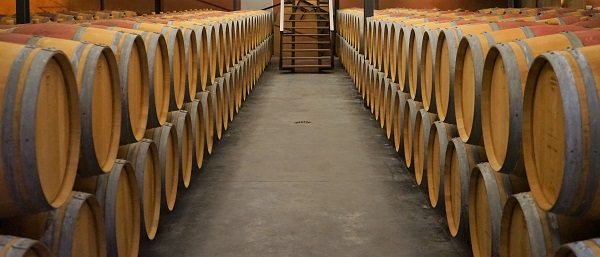
Maturation refers to the period after Fermentation before Bottling
Aging in Bottles
Aging (aka refinement or cellaring) refers to the changes in wine after bottling.
Aging has proven to improve the characteristics of wine and stimulate the birth of new aromas and astringent mouth feeling of tannins are rounded and smoothed out.
Purple and violet colors will transform into more brick and orange.
Aging can last from a few months to years, depending on the grapes and the winemaking process.
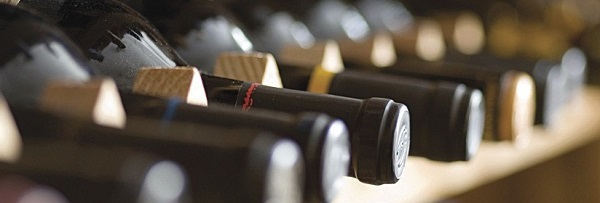
Aging can improve the quality of wine